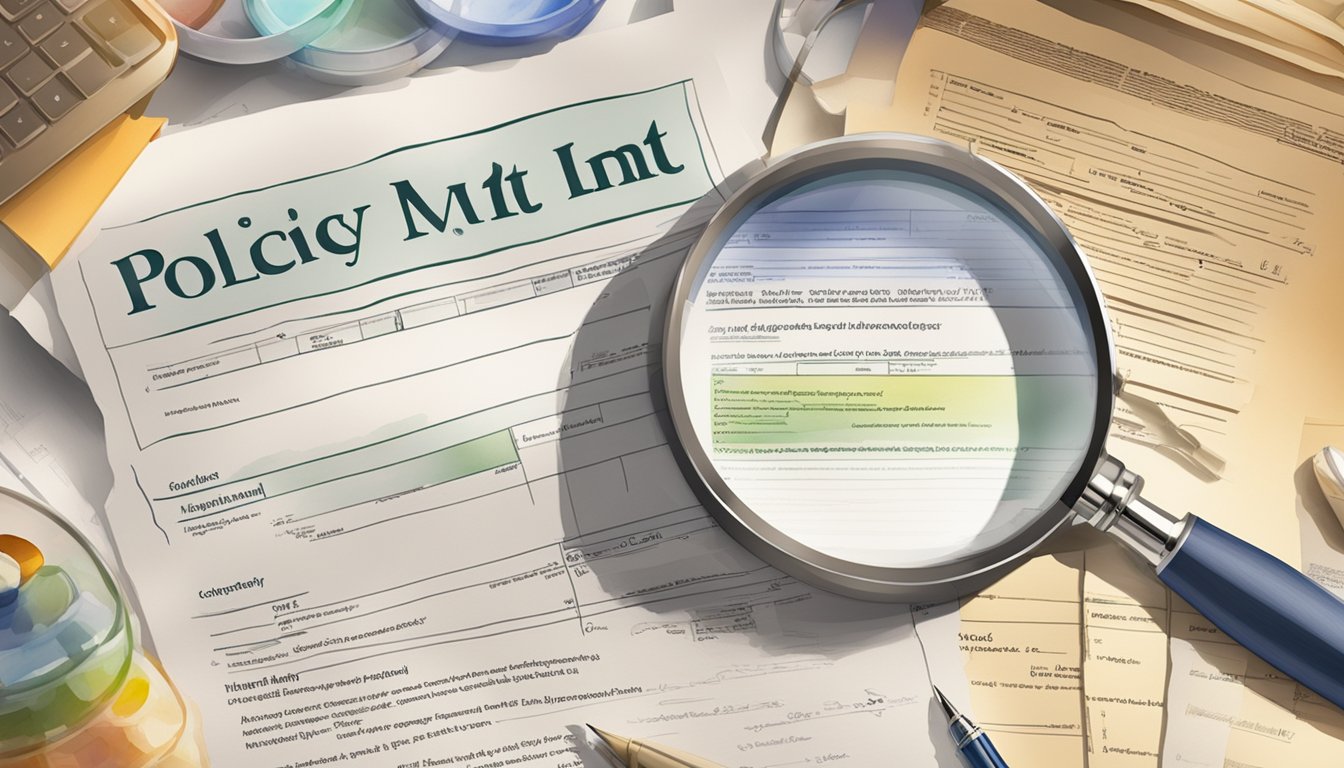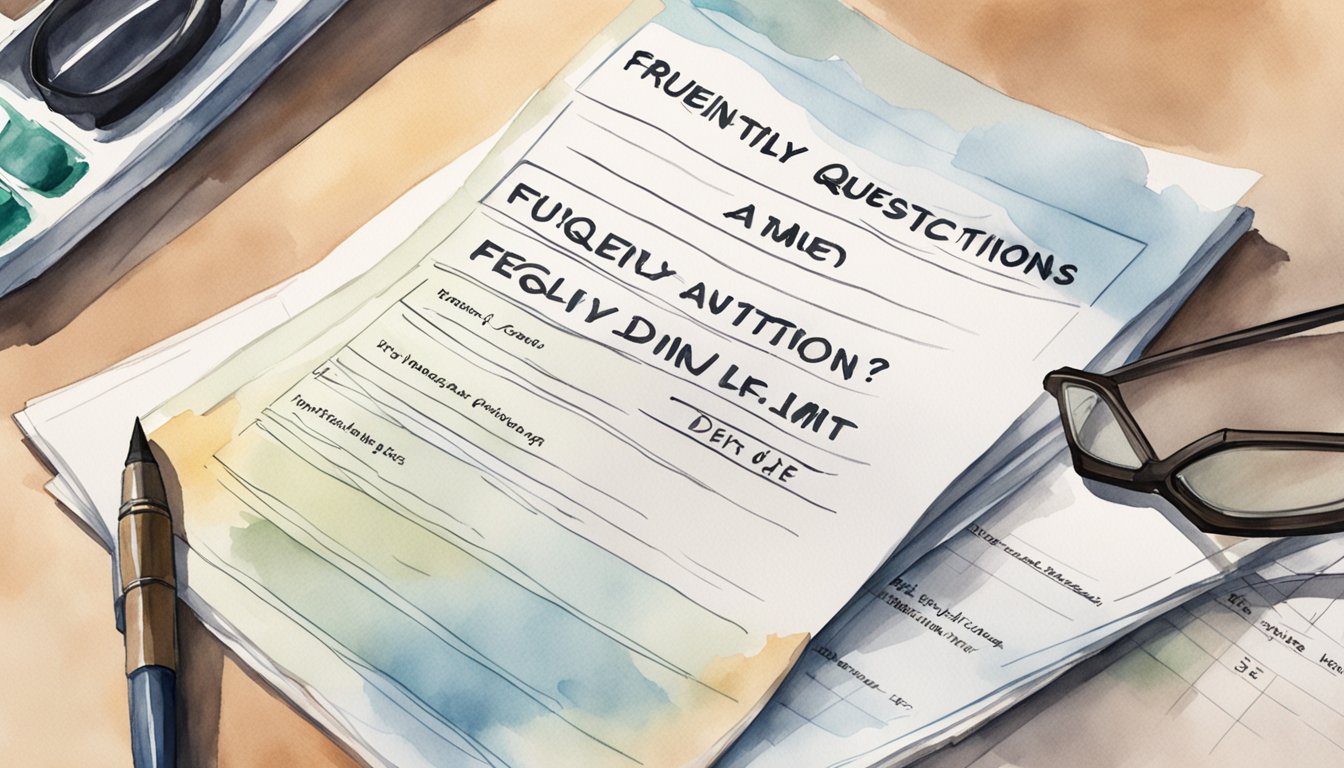Understanding Insurance Terms

Insurance can be full of specialized terms.
Knowing these terms helps you make informed decisions.
Here are some key concepts:
Premium: This is the amount you pay for your insurance.
It can be paid monthly, quarterly, or annually.
Sometimes, insurers offer discounts if you pay the entire premium upfront.
For more details, check the premium definition.
Policy Term: This refers to the duration your policy is in effect.
Common policy terms include six months or a year.
It defines the period during which the insurer provides protection.
Deductible: This is the amount you must pay out-of-pocket before your insurance coverage kicks in.
It applies to claims and can impact your premium rate.
Learn more about deductibles.
Policyholder: This is the person or entity that owns the insurance policy.
As a policyholder, you are responsible for paying premiums and following policy terms.
See the full policyholder definition.
Coverage: This is the extent of protection your insurance provides.
Coverage can vary widely based on the type of insurance and specific policy details.
Policy Limits: These define the maximum amount your insurer will pay for covered claims.
If claims exceed these limits, you are responsible for the extra costs.
Claims: A claim is a request made by a policyholder to the insurance company for compensation for a covered loss.
The process involves the insurer evaluating the claim and determining the payout based on policy terms.
Insurance Agent: An insurance agent can help you choose the right insurance policy.
They explain the various terms and options available to you.
Declarations Page: This is a document that outlines the key details of your policy, including coverage limits, premiums, and deductibles.
Understanding these terms helps you navigate the insurance industry confidently.
It’s important to know what you are buying and how it protects you.
Insurance Coverage and Limits
Insurance coverage and limits are essential concepts in the insurance industry.
An insurance policy defines the maximum amount an insurance company will pay on a claim.
Policy limits specify caps on payments for different types of covered losses.
For example, your auto insurance may include liability limits for bodily injury and property damage.
A common policy might use split limits, such as $100,000 per person for bodily injury and $300,000 per accident.
In a homeowners insurance policy, the limit might cover property damage and different liabilities.
The insurance company sets these limits based on the type and extent of coverage you choose.
If you combine limits, you have combined limits for several types per covered loss.
Types of Limits
- Per-Person Limits: Maximum payment for each person injured in an accident.
- Per-Occurrence Limits: Maximum payment for a single event.
- Aggregate Limits: Total limit for all claims in a policy period.
Example: Liability Insurance
For liability insurance, your policy may have a per-occurrence limit of $500,000.
This means the insurer will pay up to this amount for each covered loss.
If the aggregate limit is $1 million, this is the total payout for all claims within the policy term.
Out-of-Pocket Costs
If the cost of damages exceeds the policy limit, you are responsible for the excess amount.
This out-of-pocket expense may occur if claims exceed your insurance limit.
Covered Claims and Limits
Understanding your policy helps manage covered losses.
If your car insurance has a $50,000 per-accident limit, damages beyond this are your responsibility.
Links are also useful for further information.
Types of limits are defined at policy limit.
Coverage types are detailed at coverage definition.
By knowing these terms, you can ensure you’re adequately protected.
Claims and Policy Management
When managing insurance claims, understanding policy limits is crucial. Policy limits define the maximum amount your insurer will pay for covered losses.
If damages exceed these limits, you might be responsible for the difference.
Different types of insurance, such as auto insurance, have specific limits for bodily injury and property damage.
It’s vital to know these limits and adjust them to match your risk.
Deductibles and Coverage Types
Your deductible is the amount you pay out of pocket before the insurer covers the rest.
Higher deductibles usually mean lower premiums but more out-of-pocket in case of a claim. Homeowners insurance often includes coverage for dwelling, personal property, and liability.
Riders can be added to policies for extra coverage.
For example, personal injury protection and medical payments may be necessary for enhanced protection.
Working with Insurance Professionals
An insurance agent can help you choose the right coverage and limits based on your needs.
For businesses, workers’ compensation and liability coverage are key to managing potential risks effectively.
In case of a claim, a claims adjuster evaluates the damage and determines the compensation amount.
This ensures you get the right amount for your covered losses.
Keeping Policy Documents Handy
Always keep your policy documents easily accessible.
They contain crucial information about your coverage, deductibles, and policy limits.
Understanding these documents helps you make informed decisions and manage your claims efficiently.
Staying informed and proactive in managing your insurance policies can protect you from unexpected financial burdens and ensure you receive proper compensation for covered losses.
Frequently Asked Questions

Understanding policy limits in insurance can be crucial for managing risk and preparedness.
These questions and answers will provide clarity on how policy limits work in different contexts.
How are policy limits determined in health insurance plans?
Insurance companies set policy limits based on the coverage level and the type of plan.
These limits are often influenced by factors like the policyholder’s medical history, age, and typical healthcare costs.
What does it mean to have a settlement within policy limits?
A settlement within policy limits refers to resolving an insurance claim without exceeding the maximum payout specified in the policy.
This protects you from having to pay out-of-pocket expenses beyond what your insurance covers.
Can an individual ascertain their insurance policy’s limits, and if so, how?
Yes, you can find your insurance policy limits by reviewing your policy documents.
Look for terms such as “policy limits,” “maximum coverage,” or “limits of liability.” More details can be found here.
In legal scenarios, how do policy limits affect liability and damages?
In legal cases, policy limits define the maximum amount the insurer will pay for damages.
If the awarded damages exceed these limits, you may be personally responsible for the remaining amount.
How do policy limits differ from deductibles in insurance policies?
Policy limits cap the total amount an insurer will pay, while deductibles are the amount you pay out-of-pocket before insurance kicks in.
Deductibles must be met first, but they don’t affect the overall limit of the policy.
What are the implications of exceeding one’s insurance policy limits?
Exceeding your policy limits means you’re responsible for any costs beyond what your insurance covers.
For example, if medical bills exceed your health insurance limit, you’ll have to pay the extra costs.
This can lead to significant financial strain.






